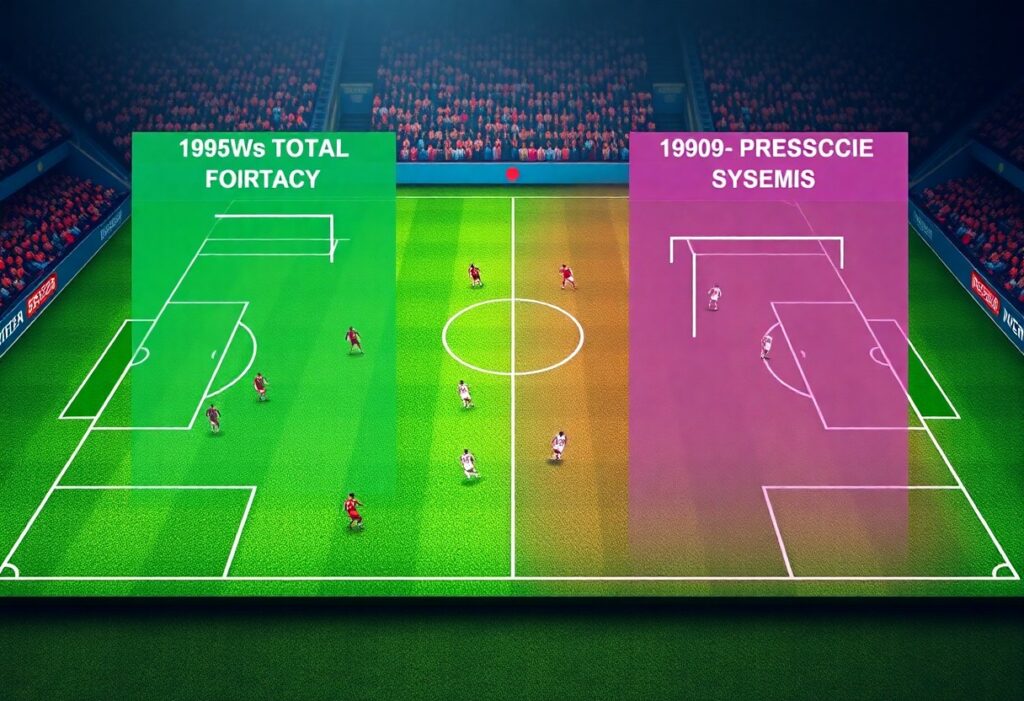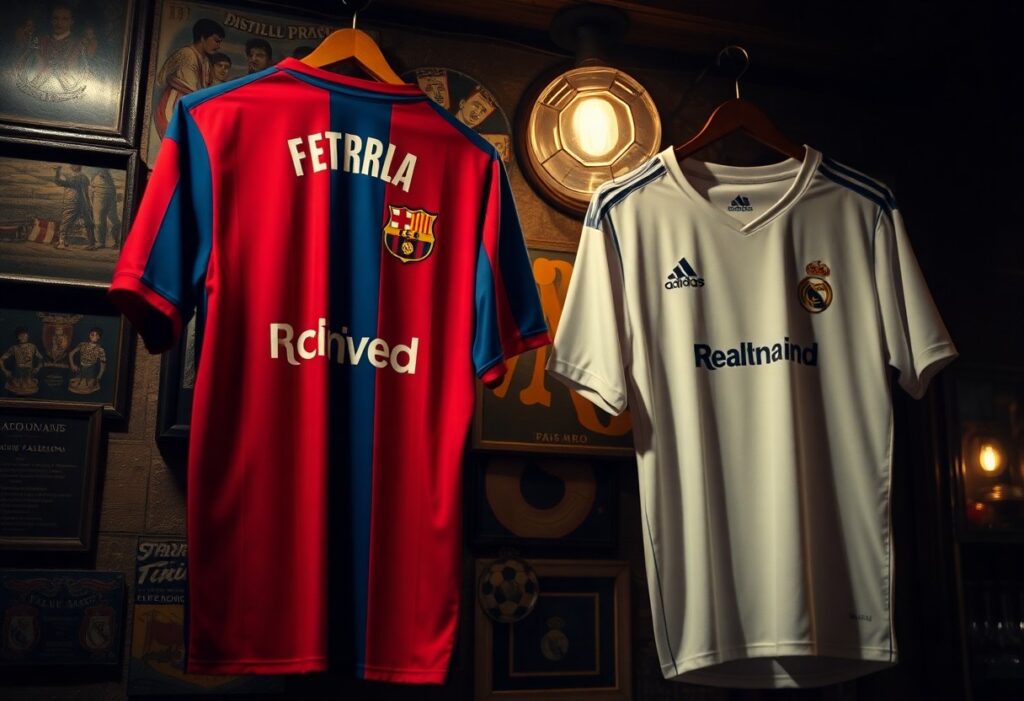
It’s fascinating to observe how strategic approaches in the UEFA Champions League have transformed over the decades. From the defensive solidity of the 1970s to the dynamic attacking formations seen today, each era has brought distinct styles that reflect broader trends in football. The shift from rigid structures to more fluid play has not only enhanced the entertainment value but also revolutionized team preparations and approaches to competition. This blog post examines into the key tactical developments and their lasting impact on Europe’s premier club tournament.
Historical Overview of the Champions League
The UEFA Champions League, established in 1955, has seen a rich tapestry of tactics unfold over the decades. Initially known as the European Cup, it featured knockout rounds where teams employed a variety of styles influenced by their local football cultures. The introduction of group stages in 1992 transformed the tournament, fostering diverse strategies that reflect the evolving nature of the game on a global stage.
Founding and Early Tactics
In its inception, the Champions League was characterized by a predominantly defensive style, with teams like Real Madrid showcasing strong, organized formations. The emphasis was on discipline, with 2-3-5 formations making way for more structured 4-4-2 setups as clubs sought to balance attack and defense. This approach limited the dynamism of play, but it laid the groundwork for future tactical advancements.
Key Milestones in Tactical Evolution
Tactical evolution in the Champions League has been marked by several significant milestones. The introduction of the back-pass rule in 1992 forced teams to adapt their playing style, increasing attacking play and fluidity. The emergence of total football in the 1970s, pioneered by Ajax, demonstrated a collective approach, influencing future tactics. Meanwhile, the rise of prominent managers, such as Arrigo Sacchi and Pep Guardiola, brought innovative formations and philosophies that revolutionized team dynamics.
Key milestones include the impact of the back-pass rule, which transformed goalkeeping tactics and increased the pace of play. The tactical fluidity introduced by Dutch total football in the 1970s spotlighted positional interchangeability, allowing players to adapt roles seamlessly during matches. Managers like Guardiola have popularized possession-based strategies, emphasizing ball control and swift transitions. Meanwhile, defensive innovations, such as the high press, have become pivotal in countering possession-dominated teams. These developments illustrate how tactical evolution reflects not only managerial ideologies but also the growing sophistication of player skill sets.
Tactical Innovations in the 1990s
The 1990s marked a pivotal period for tactical innovations in the Champions League, as teams began to embrace more fluid and complex formations. The introduction of sophisticated defensive schemes like the offside trap shifted the focus away from traditional, rigid setups, allowing for a more dynamic style of play. This transformation laid the groundwork for the emphasis on pressing and ball retention that would characterize the next decade, as clubs sought to maximize their attacking potential while maintaining a solid defensive structure.
Emergence of Total Football
The 1990s witnessed the resurgence of Total Football, a tactical philosophy characterized by fluid positional interchange and collective responsibility. Teams like Ajax, guided by icons like Johan Cruyff, implemented this approach effectively, allowing players to seamlessly transition between defensive and offensive roles. This tactical fluidity created confusion among opponents and showcased the importance of versatility, setting the stage for its adoption by various clubs across Europe.
Influence of Iconic Managers
Iconic managers in the 1990s profoundly shaped Champions League tactics, with figures like Sir Alex Ferguson and Arrigo Sacchi leading the charge. Their innovative strategies not only advanced their respective clubs but also influenced a generation of coaches. Ferguson’s use of attacking width and Sacchi’s pressing game emphasized the significance of teamwork and tactical discipline, inspiring subsequent managers to adopt and adapt these principles in their own styles, leading to more competitive and varied matchups.
The impact of these managers extended beyond mere tactics; they redefined football cultures within their clubs. Sir Alex Ferguson’s Manchester United utilized a relentless attacking philosophy infused with sharp transitions, amassing two Champions League titles during his tenure. Meanwhile, Arrigo Sacchi’s AC Milan emphasized a rigid defensive structure combined with swift counterattacks, which led to European dominance. This blend of tactical innovation and managerial prowess not only facilitated immediate success but also laid foundational principles for modern football, influencing countless successors in the years to come.
The 2000s: Tactical Diversity and Formation Changes
The 2000s witnessed an explosion of tactical diversity in the Champions League, as clubs increasingly exploited their squads’ strengths and the evolving football landscape. Teams shifted from rigid formations to more dynamic strategies, integrating fluid attacking styles and varied defensive setups. This decade saw the rise of managers who prioritized adaptability, allowing for nuanced gameplay that often confounded opponents, leading to unexpected outcomes in key matches.
Shift to 4-3-3 and Variations
The 4-3-3 formation gained prominence, allowing teams like Barcelona and Ajax to showcase their attacking prowess while maintaining positional discipline. This tactical shift emphasized width and fluidity, enabling wingers to stretch defenses. Variants, including the 4-2-3-1, emerged, offering flexibility in attack and defense, allowing managers to tailor their approaches to exploit specific matchups and opponent weaknesses.
Counter-Pressing and Its Impact
Counter-pressing emerged as a transformative tactic, fundamentally altering how teams approached winning back possession. By immediately pressuring opponents after losing the ball, teams like Liverpool and Manchester City capitalized on defensive disorganization, driving opponents to make errors. This tactic not only increased the number of attacking opportunities but also imposed a psychological burden on rivals, often forcing them into quick decisions under pressure.
Clubs implementing counter-pressing frequently dominated matches, as seen in Liverpool’s 2019 Champions League campaign. The relentless pursuit of the ball created a high-tempo game that overwhelmed many teams, resulting in significant success. Statistics reveal that teams utilizing counter-pressing often secured a higher rate of turnovers in the opponent’s half, leading to a sharp rise in goals scored from such situations. This heightened intensity dramatically reshaped tactical philosophies throughout the tournament, making counter-pressing a staple in modern football strategy.
The 2010s: Data Analytics and Modern Tactics
The 2010s marked a significant shift in football tactics, driven largely by the integration of data analytics. Teams began to rely heavily on statistical analysis to inform player recruitment and match strategies, leading to a more scientific approach to the game. Coaches like Pep Guardiola and Jürgen Klopp optimized their systems around high pressing and intricate passing, fundamentally altering the landscape of the Champions League and emphasizing the importance of adaptability.
Rise of the Possession-Based Game
The dominance of possession-based football characterized the decade, with teams like Barcelona and Bayern Munich showcasing its effectiveness. Such strategies focused on controlling the game through quick passing and maintaining possession, ultimately dictating the tempo and exhausting opponents. This shift changed how teams approached not only attack but also their defensive setups, often employing a higher line to regain possession swiftly.
The Role of Set Pieces
Set pieces became an increasingly vital aspect of the game, with many teams recognizing their potential for scoring. With the increasing precision of takers and greater tactical planning, clubs started capitalizing on corners and free kicks as structured opportunities. Data analytics also enabled teams to identify defensive weaknesses, allowing them to devise tailored routines aimed at maximizing these set-piece chances.
In the 2010s, set pieces evolved into a strategic weapon rather than an afterthought. For example, teams like Atlético Madrid turned to innovative routines that combined movement and deception, resulting in a significant portion of their goals. Under the guidance of coaches who embraced analytics, clubs meticulously analyzed opposition weaknesses, leading to direct goals. Statistically, studies revealed that set pieces accounted for over 30% of goals scored in some Champions League seasons, highlighting their indispensable value in modern tactical play.
Recent Trends in Tactical Approaches
In recent years, tactical approaches in the Champions League have evolved towards more dynamic and adaptive strategies. Teams now balance traditional formations with innovative styles, often shifting systems mid-game to exploit defensive weaknesses. This adaptability is evident in clubs like Manchester City and Bayern Munich, who utilize versatile players capable of executing multiple roles, increasing their tactical fluidity and unpredictability on the pitch.
Integration of Youth and Innovation
Clubs are increasingly turning to homegrown talent to fuel innovation. Teams like Barcelona and Ajax have embraced youth academies, integrating young players into their tactical framework. This strategy not only revitalizes the squad but also brings fresh perspectives and energy, evident in the rise of talents such as Pedri and Ryan Gravenberch, who have made significant impacts in the Champions League.
Fluid Tactical Systems
The shift towards fluid tactical systems allows teams to seamlessly transition between formations, enhancing their adaptability during matches. This approach emphasizes positional interchangeability, enabling players to fill in various roles as needed. For example, the use of a 4-3-3 formation can morph into a 3-2-4-1 in attacking situations, maximizing both width and creativity while maintaining defensive stability. Coaches like Pep Guardiola and Thomas Tuchel effectively implement these systems, making their teams difficult to predict and defend against.
Final Words
On the whole, the evolution of tactics in the Champions League reflects broader trends in football, showcasing a shift from individual brilliance to cohesive team strategies. Over the decades, clubs have adapted to new styles, integrating advanced analytics and training methodologies to enhance performance. This tactical progression has not only influenced match outcomes but has also reshaped the identities of clubs competing at the highest level. As teams continue to innovate, the tactical landscape of the Champions League will undoubtedly evolve further, promising exciting developments in future competitions.
FAQ
Q: How have tactics in the Champions League evolved since its inception?
A: Since the Champions League began in 1992, tactics have shifted from a focus on defensive strategies to more attacking styles. Early teams prioritized solid defenses and physical play, while recent teams emphasize possession-based football and fluid attacking movements. The influence of managers like Pep Guardiola and Jürgen Klopp showcases the blend of tactical innovation and adaptability in response to opponents.
Q: What role do formations play in the evolution of Champions League tactics?
A: Formations have changed significantly, with the traditional 4-4-2 giving way to more dynamic setups like 4-3-3 and 3-5-2. This evolution allows for greater flexibility in both offensive and defensive phases, enabling teams to exploit opponents’ weaknesses. The use of wing-backs and false nines has grown, demonstrating a shift toward positional play aimed at creating spaces and overloads on the field.
Q: How has player specialization influenced tactical changes in the Champions League?
A: Player specialization has profoundly affected tactics, with roles becoming more defined based on individual skills. The rise of specialized attacking midfielders, playmakers, and versatile defenders has led teams to adapt their formations and strategies to maximize these players’ abilities. This trend has encouraged coaches to develop intricate systems tailored to their squads, enhancing overall team performance in high-stakes matches.


